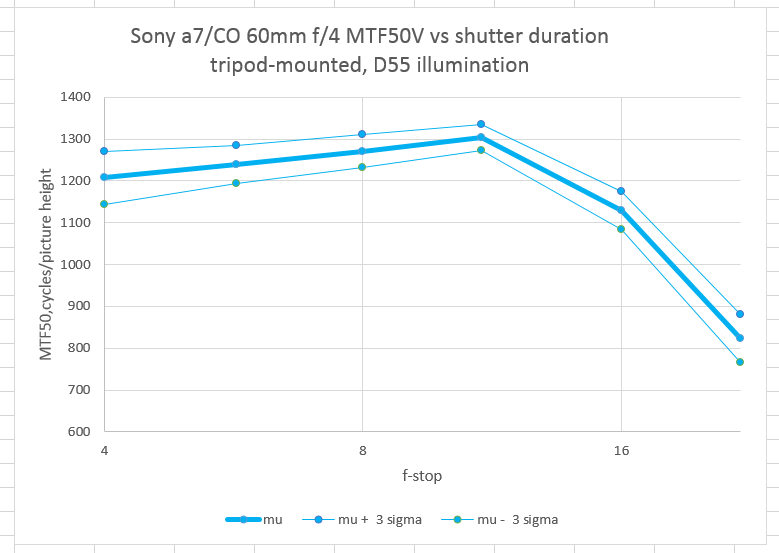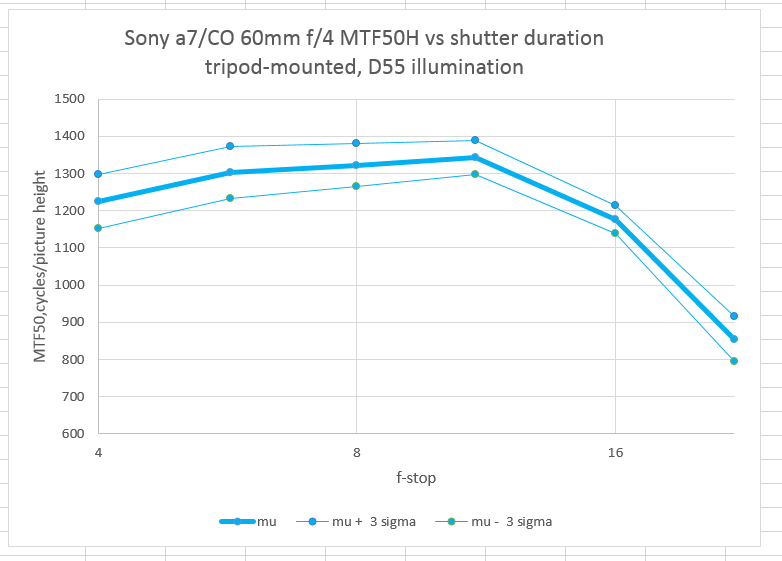I mounted the Coastal Optical 60mm f/4 UV-Vis-IR Apo Macro lens (hereafter called the CO 60) to the LifePixel-modified Sony alpha 7. The LifePixel filter absorption curve is “Super Color”. I mounted a RRS L-plate, clipped it in landscape orientation into an Arca Swiss C1 head which was attached to a set of RRS TVC-44 legs.
I lit an Imatest SFRPlus target with a Paul Buff Einstein strobe. I set the ISO to 100, the shutter speed to 1/125 second, the shutter mode to 2-second self timer, programmed second curtain synch and electronic first curtain shutter (EFCS), focused wide open, and set the aperture to f/22. I set the strobe power to 80 watt-seconds. Using the variable power output on the Einstein to control the light level (80ws, 40 ws, 20 ws, 10ws, etc.), I made a series of sixteen exposures each at f/22, f/16, f/11, f/8, f/5.6, and f/4. I developed the images in Lightroom 5.7.1 with sharpening and noise reduction turned off, exported them as TIFFs, and measured on-axis MTF50 in both the vertical and horizontal direction.
Here are the results:
The heavy lines are the average (mean, or mu) results. The light lines are the mean plus 3 standard deviation and mean minus three standard deviation line. If the MTF statistics are Gaussian, 99.7% of samples should lie between the two light lines.
You can see that there are not important variation in MTF at f/4 through f/11. You can also see that f/16 is entirely usable. IThe vertical and horizontal curves were produced from the same set of exposures.
Also note that 1400 cycles/picture height corresponds to 0.35 cycles/pixel. This lens is delivering really strong performance; the sensor is trying hard to keep up, but it’s more the limiting factor than the lens.
The strobes I used are balanced for D55, which is about daylight. However, I don’t know how well the strobes replicate a 5500 Kelvin black body in the IR region. The curves could vary with the amount of IR radiation.
One possible further experiment is to repeat the test with a visible-light-blocking filter in front of the lens.
I am glad that I don’t have to be scared of using the lens at f/11.


Leave a Reply